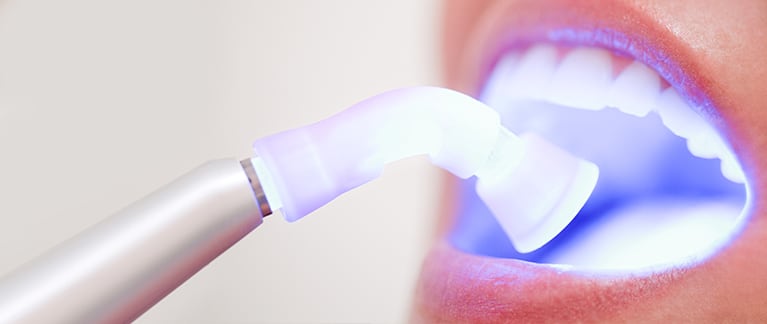Laser Dentistry: Hard Tissue and Soft Tissue Procedure, Benefits, Risks
 How are laser treatments performed?
How are laser treatments performed?
The two main types of methods applied for laser dentistry are hard tissue and soft tissue methods. Hard tissue for the teeth, and soft tissue for the gums.
Hard Tissue Procedures include:
Cavity Detection: Lasers can identify cavities early by detecting proof of tooth decay.
Tooth preparations and dental fillings: Local anesthesia and regular drills are frequently not required with laser operations. Lasers can remove bacteria in a cavity, which can help in the long-term health of a tooth.
Treating Tooth Sensitivity: Teeth that have the sensitivity to hot including cold can be treated by dental lasers that seal tubules on the tooth’s root.
Soft Tissue Procedures include:
Treating a “gummy smile”: Lasers are used to reshape gum tissue associated with “gummy smile,” in which the gums’ length covers much of the tooth.
Crown Lengthening: This method reshapes both gum tissue and bone for stronger tooth structure, which assists with placing rehabilitation on the teeth.
Treating tongue frenulum attachment: These with a solid or tight frenulum (the wrinkle of skin below the leading part of the tongue that anchors to the mouth floor) may help from a laser frenectomy. This surgery helps children whose restricted frenulum makes them be tongue-tied, have problem breastfeeding, or have a speech disability.
Removing soft tissue folds: Lasers can exclude soft tissue wrinkles from ill-fitting dentures without pain or stitchings.
Other laser procedures include:
Viewing Tissues: Visual consistency tomography allows a doctor to safely view inside a tooth or gum tissue.
Removing benign tumors: Lasers can remove tumors from the palate, gums, and sides of the lips and cheeks through pain and suture-free method.
Treating obstructive sleep apnea: Lasers can reshape the throat and relieve associated breathing problems when sleep apnea is caused by tissue overgrowth in the throat.
TMJ (temporomandibular joint) treatment: Lasers can help reduce pain and inflammation in the joint.
Nerve Regeneration: Lasers can help regenerate damaged blood vessels, nerves, and scars.
Treating cold sores: Lasers can minimize healing time and reduce pain from cold sores.
Teeth whitening: Lasers speed up the bleaching method during teeth-whitening sessions.
Laser treatments such as those can differ in price, depending on the procedure being executed and the laser devices used. Related to non-laser treatment, they may be less valuable because the laser treatment is normally performed in fewer sessions.
Benefits of using Laser Dentistry over other methods
- There is probably a reduced need for stitchings with soft tissue lasers.
- Bleeding is reduced in treated soft tissues, as the laser increases blood clotting.
- With some procedures, anesthesia is unnecessary.
- The risk for bacterial infections is lower because the laser decontaminates the area.
- Injuries can recover faster, and it’s possible for tissue to reconstruct.
- The procedures may include less harm to the enclosing tissues.
Soft tissue lasers can be absorbed through water and hemoglobin. Hemoglobin is a protein encountered in red blood cells. These lasers are applied to treat periodontitis, including destroying bacteria and stimulating tissue regrowth.
Soft tissue lasers seal nerve finishes and blood vessels while they infiltrate the tissue. For that reason, diverse experience almost no pain after laser surgery. The lasers also help faster healing of the muscle.
Disadvantages of laser dentistry
- Lasers can’t be used on teeth that already have certain types of filling, such as metal amalgam.
- Hard lasers can sometimes injure tooth pulp.
- Some laser procedures still require anesthesia.
- Drills are still sometimes required to perform fillings, including shaping, improving the bite, and polishing the filling.
- Some procedures can’t be made with laser treatment, depending on the preexisting neighboring tissue or parts involving the tooth or gums.
- There is a risk of gum injury.
What risks are associated with laser dentistry?
The risks of laser dentistry are relatively small. It’s important to find a qualified dental professional, as using the wrong wavelength or power level could damage tissue. Additionally, some providers suffer that promoters are promoting the use of laser treatment beyond what people actually need.

